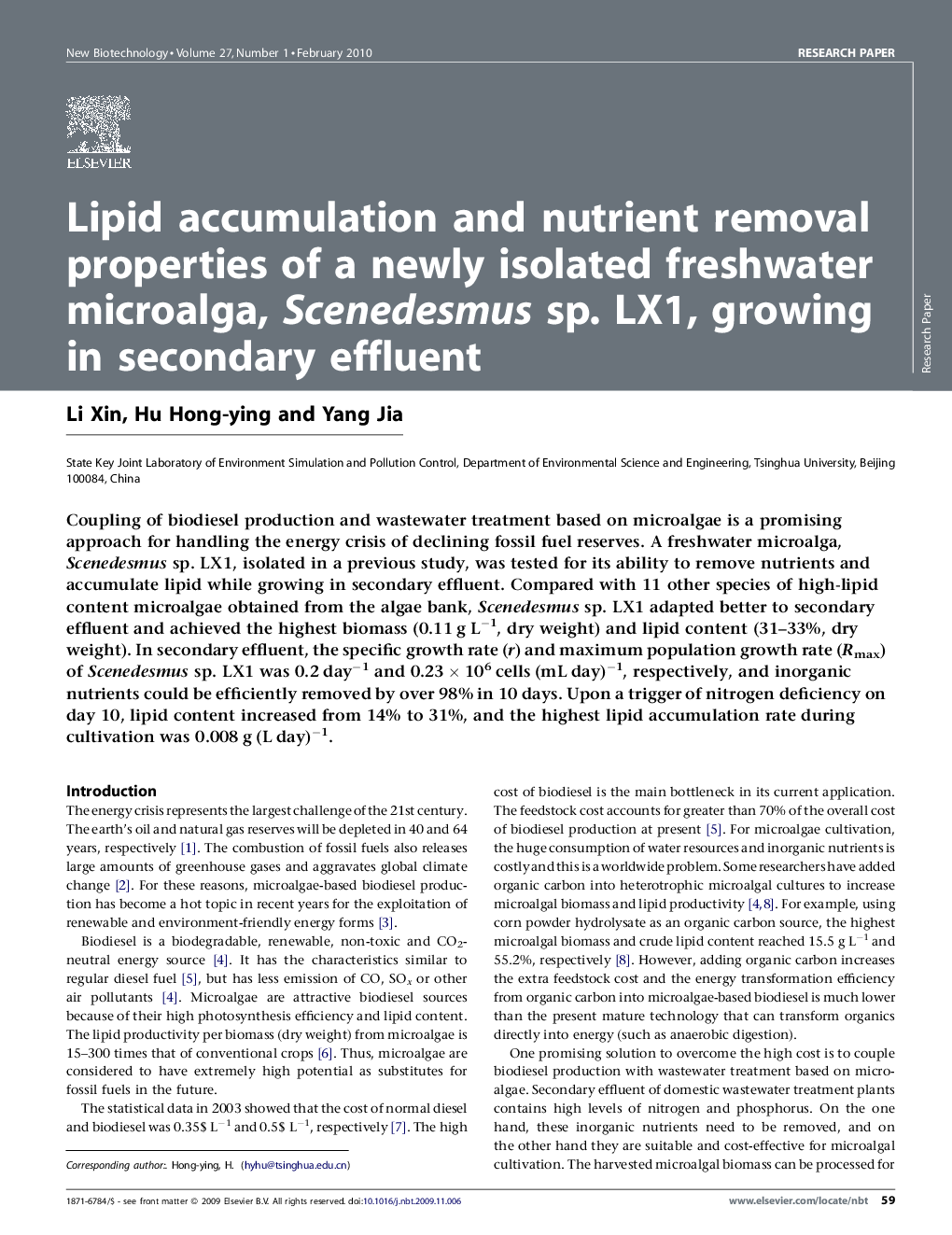| Article ID | Journal | Published Year | Pages | File Type |
|---|---|---|---|---|
| 33578 | New Biotechnology | 2010 | 5 Pages |
Coupling of biodiesel production and wastewater treatment based on microalgae is a promising approach for handling the energy crisis of declining fossil fuel reserves. A freshwater microalga, Scenedesmus sp. LX1, isolated in a previous study, was tested for its ability to remove nutrients and accumulate lipid while growing in secondary effluent. Compared with 11 other species of high-lipid content microalgae obtained from the algae bank, Scenedesmus sp. LX1 adapted better to secondary effluent and achieved the highest biomass (0.11 g L−1, dry weight) and lipid content (31–33%, dry weight). In secondary effluent, the specific growth rate (r) and maximum population growth rate (Rmax) of Scenedesmus sp. LX1 was 0.2 day−1 and 0.23 × 106 cells (mL day)−1, respectively, and inorganic nutrients could be efficiently removed by over 98% in 10 days. Upon a trigger of nitrogen deficiency on day 10, lipid content increased from 14% to 31%, and the highest lipid accumulation rate during cultivation was 0.008 g (L day)−1.
